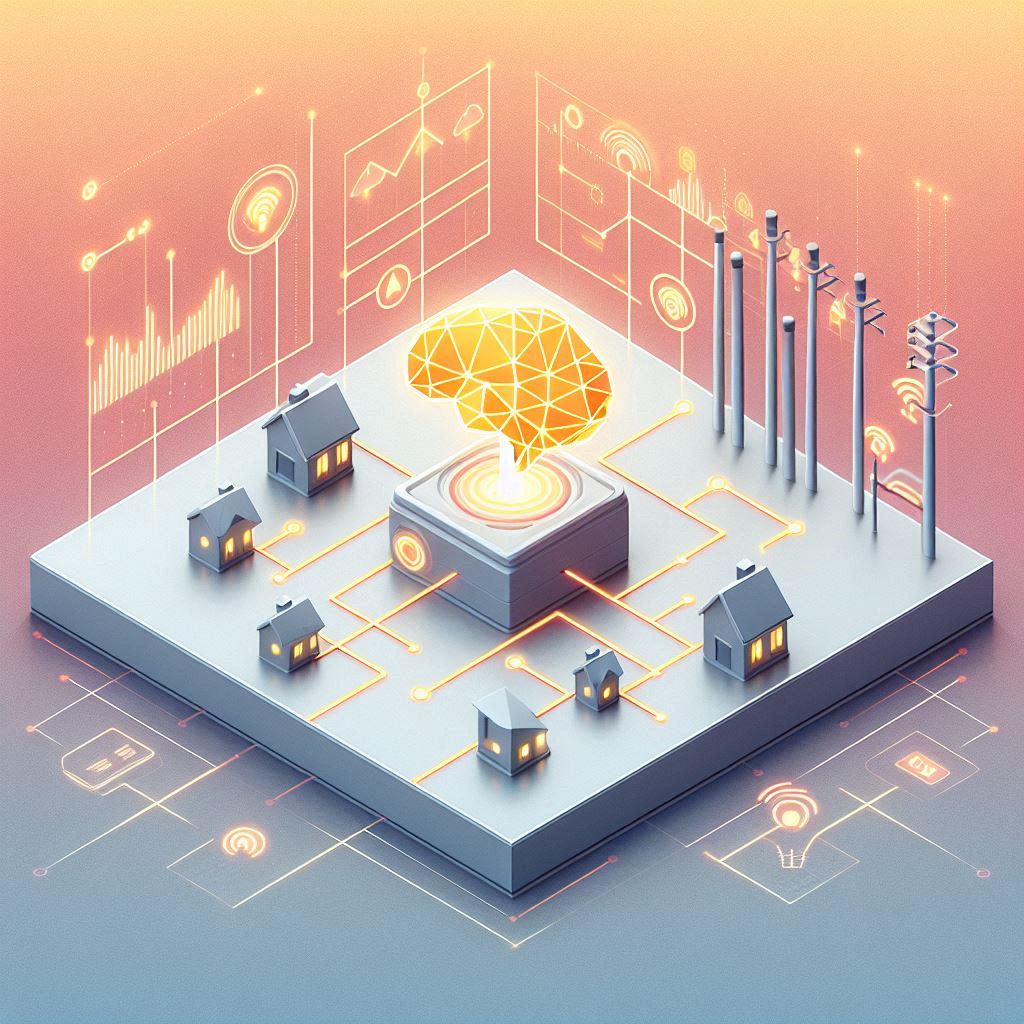
This research demonstrates how using LSTM-based artificial intelligence to forecast power demand in small power grids can significantly reduce carbon dioxide emissions by enabling more efficient and responsive energy generation.
Ever wondered how small power grids could help fight climate change? It turns out, the answer lies in… artificial intelligence! 🤖 A team of Polish researchers has shown how smart predictions using AI can balance electricity needs and dramatically cut carbon emissions—even in small, local “island” grids that often face wild swings in energy demand.
Let’s break it down in plain terms! 👇
Think of a local power grid like a small town’s electric system. It’s got homes, factories, shops—all needing electricity at different times. Some factories might use massive power in the morning, then shut down by noon. These spikes make it hard for traditional power plants (especially coal-fired ones) to keep up without wastefully overproducing energy ⚠️.
Too much energy? That’s a problem. Too little? Blackouts! 😬
To fix this, the researchers used LSTM (Long Short-Term Memory) networks—a type of deep learning AI that’s super smart at understanding time-based data ⏱️.
LSTM works like a weather forecaster but for electricity. By feeding it data from the last two years (17,520 hours!), it learned patterns like:
This way, the AI could accurately predict power needs an hour in advance—enough time to adjust generation plans without waste!
The team tested their model using data from a large Polish city’s power grid. The AI model achieved:
Translation: That’s really, really accurate. 🙌
They also visualized demand patterns, showing how usage changes by the hour, week, and season. AI helps smooth out these variations, like calming a stormy sea of electricity needs 🌊➡️🌤️.
Most of Poland’s electricity still comes from:
These sources emit a lot of CO₂:
But when power demand is predicted more accurately, generators don’t have to overproduce! For instance, reducing output by just 54 MW for one hour cuts emissions by:
💨 48,600 kg CO₂ (coal)
💨 57,510 kg CO₂ (lignite)
💨 24,300 kg CO₂ (gas)
That's like taking hundreds of cars off the road for a day! 🚗❌🌿
Here’s the magic behind the curtain:
The network was trained and tested using MATLAB, and the team even used an ensemble of 5 LSTM models to ensure accuracy. That’s like having a council of expert forecasters debating before giving the final prediction 🧙♂️🔮.
Once the AI predicts a spike or drop, the power system can:
And the best part? These actions are automatic. The system learns continuously and adapts in real time! 🤯
Here’s where this research is headed:
✅ Scaling up: Apply AI to more grids in different regions
✅ Integrating renewables: Even better results with wind, hydro, and solar ☀️
✅ Real-time dispatch: Smarter, faster responses to demand swings
✅ Collaborative grids: Syncing multiple local grids for national impact 🌐
Imagine a future where power plants only generate what’s truly needed—nothing more, nothing less. It’s efficient, clean, and smart.
This research shows us how artificial intelligence isn’t just about robots or self-driving cars—it’s about creating a smarter, greener world. 🌳⚡
By predicting power demand in small grids, AI can:
That’s engineering for sustainability—and it’s exactly what the world needs right now. Let’s build it together! 💪🌎
🔌 Power Grid - A giant network that delivers electricity from power plants to your home, office, and everywhere else—like the veins of a country, but for power! - More about this concept in the article "Transforming Power Grids for EV Charging 🚗 🔋 A Sustainable Revolution".
⚡ Power Demand - How much electricity people and machines need at any given moment—think of it like energy cravings that change all day long.
🔄 Load Forecasting - Predicting how much electricity will be needed in the near future—like guessing tomorrow's outfit based on the weather! - More about this concept in the article "Power Grid Revolution: How Machine Learning is Making Our Energy Smarter 🔌✨".
🧠 Artificial Intelligence (AI) - Smart computer systems that learn from data and make decisions—kind of like giving your laptop a brain! - More about this concept in the article "Decentralized AI and Blockchain: A New Frontier for Secure and Transparent AI Development ⛓️ 🌐".
🔁 Neural Network - A digital model inspired by how the human brain works—it helps AI spot patterns and make predictions. - More about this concept in the article "Hidformer: How a New AI Model is Changing the Game in Stock Price Prediction 📊🤖".
🧠 LSTM (Long Short-Term Memory) - A special kind of neural network that’s great at understanding time-based patterns—perfect for predicting things that change hour by hour (like power use!). - More about this concept in the article "Predicting Tomorrow Through Sentiment Analysis: How AI is Changing Stock Market Forecasting 📈🤖".
🏭 CO₂ Emissions - Carbon dioxide gas released mostly by burning fossil fuels—it’s a big reason our planet is heating up. - More about this concept in the article "Harnessing Microalgae for a Greener Future: Biofuels & CO2 Capture Explained 🦠 🌱".
🌱 Renewable Energy - Clean, natural energy sources like sun ☀️, wind 🌬️, and water 💧 that don’t pollute and never run out. - More about this concept in the article "Forecasting the Future of Renewable Energy: Smarter, Faster, Better! ⚡☀".
🏝️ Small/Island Grid - A small or local power system not connected to a larger national grid—like an energy island with its own challenges.
Source: Ciechulski, T.; Paś, J.; Stawowy, M.; Duer, S. Using Artificial Intelligence to Predict Power Demand in Small Power Grids—Problem Analysis as a Method to Limit Carbon Dioxide Emissions. Sustainability 2025, 17, 3694. https://doi.org/10.3390/su17083694
From: Military University of Technology; Warsaw University of Technology; Koszalin University of Technology.